BART (Biological Activity Reaction Test) is one of the most common iron related bacteria test. This Hach Company kit includes 9 tests. When IRB present in the sample, then a series of reaction occurs with IRB and nutrients ingredients in the inner tube. The change to red color of the water indicates a presence of bacteria within that sample. The IRB-BARTs can detect both iron oxidizing and iron reducing bacteria.
What are Iron Related Bacteria
Iron related bacteria are microorganisms that can use iron in their metabolism. Generally they are found in surface water and soil but they can also found in well water. The Common iron related bacteria are iron oxidizing bacteria, iron reducing bacteria gallionella, sheathed iron bacteria, pseudomonads and enteric bacteria. Among them the iron oxidizing and iron reducing bacteria are most important. These bacteria are usually found in waters having relatively high concentrations of iron and manganese in the water.
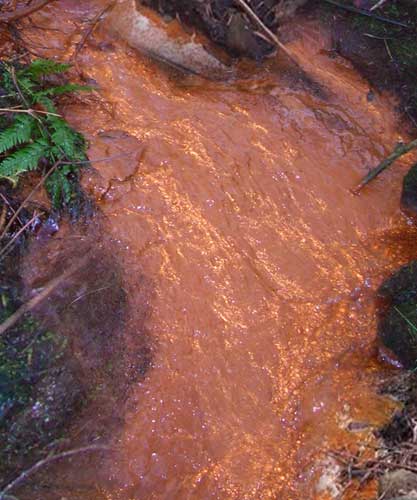
What are the effects of iron bacteria?
Iron related bacteria usually change the color of the water to red, brown or orange or stain on fixtures. The IRB are responsible for slim production, creating corrosion, clogging, fouling, and hygiene risk. Besides they can also create unpleasant tastes and odor which are more noticeable in the water that is not used for long time. Normally Iron bacteria are not hazard to health but some cases they cause problems. During drilling and handling the well and groundwater may contaminant with IRB so we have to carefully handle it. It don’t create hydrogen sulfide, the “rotten egg” smell.
Method of Iron Related Bacteria Test
1. Sample collection: This IRB BART contains two tube – inner tube and outer tube. To collect the sample water, firstly open the outer tube cap and remove the inner tube from the outer tube. Then collect at least 20 ml of sample water by using the outer tube. During sample collection do not touch the inside of the tube. Moreover, the outer side of the sample source should be cleaned so that bacteria cannot enter the sample from outside.

2. Now open the inner tube cap and keep on a clean surface so that the cap does not contaminant. It should be remember that IRB primarily grows on the pipes. Fill the inner tube with the collected sample water up to mark which is 15 ml. The inner tube contains nutrients ball to grow IRB.
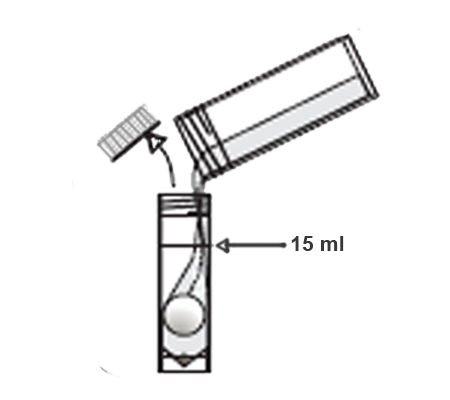
3. Then close the inner tube cap tightly. Discard the unused sample in the outer tube and return the inner tube into the empty outer tube. Then screw the outer tube cap tightly. Allow the ball to float to the top with no help. After placing the sample do not shake or swirl the tube.
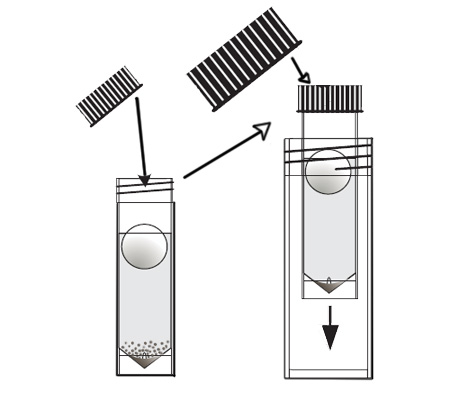
4. Label the outer IRB test tube with the date and sample name.
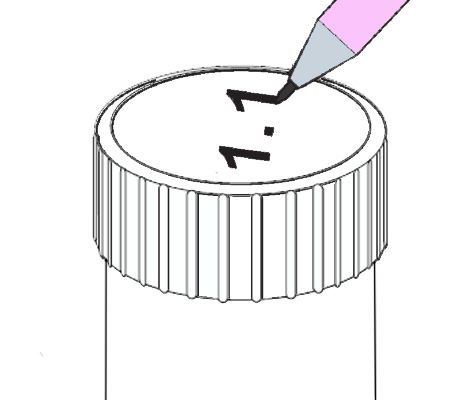
5. Place the IRB test tube away from direct sunlight and allow incubating at room temperature for eight days (if necessary). Check the BART visually for reaction daily.
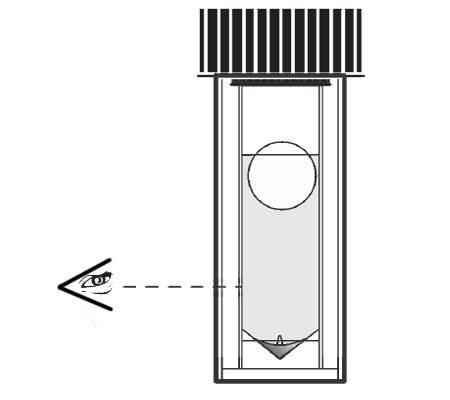
6. Foam or a brown slime ring around the ball and on the bottom of the sample tube will indicate the sample contains iron related bacteria. Whereas the absence of foam or brown slime will indicates the sample has no iron related bacteria.
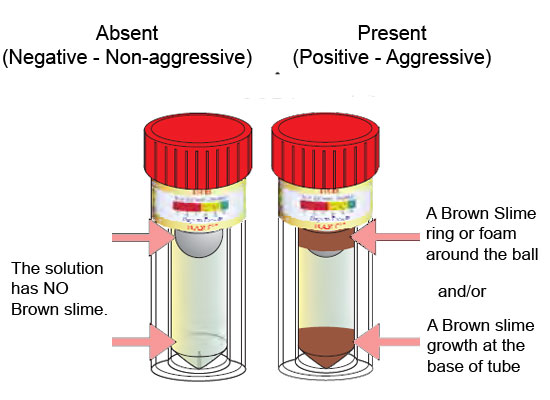
7. Estimate bacteria population: When the iron related bacteria test result is positive then come in the question, how many the bacteria in the water sample? By observing how many days brown slime is formed we can make an estimate of the bacterial population. When the bacteria population is high, then a faster reaction is occurred. We can determine the amount of bacteria by the following table. If the IRB is higher, then you can consider a fecal coliform test.
| Days to reaction | Approximate IRB population (cfu/ml) | Aggressivity |
|---|---|---|
| 1 | 540,000 | Very high |
| 2 | 140,000 | High |
| 3 | 35,000 | High |
| 4 | 9,000 | Moderate |
| 5 | 2,300 | Moderate |
| 6 | 500 | Moderate |
| 7 | 150 | Moderate |
| 8 | 25 | Low |
8. Dominant bacteria:
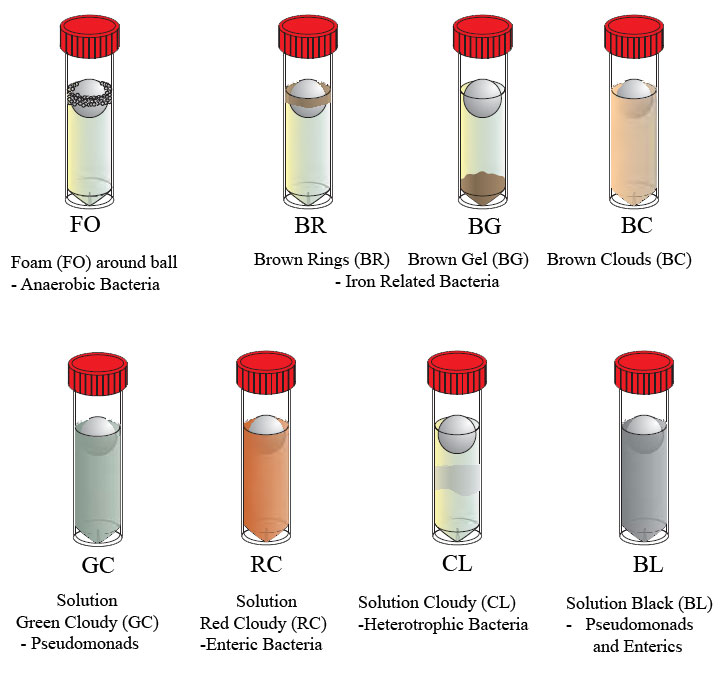
If the iron related bacteria test result is positive then we have to examine the type of dominant bacteria. With the color comparison of the IRB test tube we can determine the dominant bacteria type in the sample water. If the sample tube water is red color and cloudy then the dominant bacteria is enteric while it is black then the dominant bacteria type is pseudomonad’s and enteric.